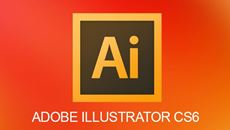- Delivery Method Online
- Professional Certificate
- 24hrs Suggested Study Time
- 3 Months Access
- Tutor Support
- Study On Any Device
- 818 Students
InDesign CS6 Fundamentals

Learn how to use Adobe InDesign CS6, the industry-standard desktop publishing software program, to design professional-quality letterheads, brochures, eBooks, and more.
In this Adobe InDesign CS6 class, you'll get hands-on desktop publishing training and come away knowing how to use this popular page layout software program to design and create professional-quality letterhead, business cards, brochures, PDF files that play movies, and more. You'll discover that you don't have to be a designer or an artist to produce professional-quality documents!
In each lesson, we'll cover an important aspect of InDesign CS6 as you prepare a range of print and online products for Natalie, the fictional owner of Natalie's Nautical Emporium. You'll get dozens of files to use in the lessons—partially completed InDesign files, as well as the graphics, images, fonts, and other content required for the project. And to check your work or troubleshoot any problems you encounter, you'll always get a copy of the finished InDesign project file.
Lesson by lesson, you'll explore the best ways to use the features in this program to create different types of material, how to organize and name your files, and how to reuse items such as colors and artwork. By the time you finish the course, you'll not only be comfortable with the tools and features that InDesign CS6 offers, you'll also know the most efficient ways to use the program to produce the materials you need for your own work, recreation, or hobbies.
Courses are delivered to you through expertly executed lessons, online instruction and interaction with like-minded students. Our courses are designed to deliver all of the benefits of studying in a classroom whilst giving you the flexibility to study at a time and place to suit your needs. You can access your classroom 24/7 from any device with an internet connection.
This course has a 3 month duration. You'll complete comprehensive lessons, quizzes and assignments before submitting your final exam at the end of the course to achieve your certificate. Courses must be completed within the 3 month access period.

Donna Baker
Donna Baker is a freelance graphic designer and author of many books on design software and Web design. She produces custom tutorials, videos, and infographics for Adobe TV. She's also an Adobe Certified Expert and Adobe Community Expert. As you m... Read more
Read Donna Baker's ProfileFrequently Asked Questions
The Learning Environment
From the moment that you enrol in the InDesign CS6 Fundamentals you will become an integral part of our learning community. You'll find yourself with the freedom to learn at a speed that suits you, on any device, from anywhere in the world. Achieving your career goals no longer has to mean compromising family and work commitments.
Our Values
Learn At Your Own Pace
We believe in personalised learning. That's why we provide all the tools and support you need to succeed at your own pace. With flexible learning, you'll stay motivated and retain more information. Plus, you can balance your studies with work and family commitments to make your dreams a reality.
We Won't Break The Bank
Education should be accessible to anyone who wants to learn. That's why we offer some of the most competitive prices in the industry with payments plans for just $25 per week. Investing in your future is a smart choice and doesn’t have to break the bank.
Industry-Led Courses
There's no better way to learn than from experts with years of experience in your field. That's why each of our 200+ industry-led courses are designed to give you a real-life perspective on your industry. With our expert mentors, you'll learn from people who have a wealth of knowledge and experience, and who are passionate about sharing it with you.
Get The Personal Support You Deserve
At Vibe Learning, we're real people who are dedicated to providing you with personal support every step of the way. Our industry experts are not only professional and knowledgeable but also incredibly passionate about sharing their expertise with you. With their guidance, you'll gain invaluable insights and practical knowledge to help you succeed.
Still looking?
Check out the following courses related to InDesign CS6 Fundamentals:


